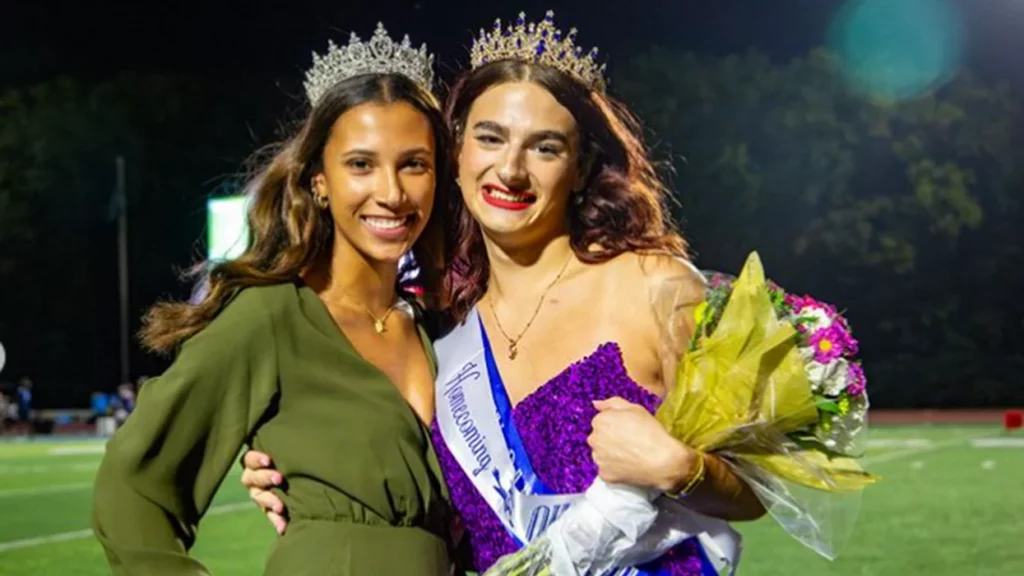Gender Ideology
Cruelty cloaked as compassion: The transgender movement’s war on women
A November 3 post on X (formerly Twitter) from J.K. Rowling caught my eye recently. It was her comment on the decision of an Australian court to mandate that the ‘preferred pronouns’ of people identifying as transgender be used as a “matter of respect” to ensure “public confidence in the proper administration of justice.” As Rowling noted: “Asking a woman to refer to her male rapist or violent assaulter as ‘she’ in court is a form of state-sanctioned abuse. Female victims of male violence are further traumatised by being forced to speak a lie.” Indeed, forcing a woman to refer to the man who abused and raped her as ‘she’ seems a particularly grotesque form of gaslighting.
Rowling’s comment gets to the heart of something that is not commented on often enough: the manifest cruelty of the transgender movement. I’m not referring here to the mobs of trans-identified men that so often threaten violence towards women who dare to speak out—or, as in the case of Posie Parker’s visit to New Zealand earlier this year, actually perpetrate it. Nor am I speaking of the torrent of vile threats of rape that women like Rowling face from these vicious men in dresses. I mean the cruelty of the practices and policies imposed by those in power on women and girls in the name of the transgender movement, which have swept virtually every Western country in under a decade.
“Sad, powerless, and confused”
Many manifestations of this cultural shift have a sinister, totalitarian air about them. Scenes of men like Dylan Mulvaney winning female awards—Virgin Atlantic’s “Woman of the Year” is the latest—while being applauded wildly by men and women in the audience remind me of the crowds forced to give minutes-long standing ovations to dictators for fear of being recognized as dissidents. The cultural overlords are watching, and you’d better think this is fair and good and a bold step forward for ‘transwomen’ if you know what’s good for you. Mulvaney isn’t a one-off example, either—as of March, nine men have won ‘Women of the Year’ awards.
Then there are the high school males winning prizes like Homecoming ‘Queen,’ once reserved for those Walker Percy memorably described as “football girls in the fall with faces like flowers.” Now we are treated to photographs of pretty girls clustered around a jut-jawed gangly young man in long hair and a dress—it seems sadistic, somehow. The girls must smile; must affirm that this young man—who is so obviously a man—is a pretty girl, prettier than they are, a flower among flowers. The press and the LGBT movement and the idiots who chose him, of course, are wild with celebration—and there is more than a little warning in their cheers. Say he’s beautiful. Say it like you mean it. If you don’t, we’ll make you a national news story.
Of course, that only happens after the girls have been forced to share changing rooms and bathrooms with these young men. Girls have risked urinary tract infections rather than use the bathroom with boys. Girls have pled with adults to keep the boys out of their changing rooms, but even their tears do not shake the idealogues in charge. If girls refuse to share their spaces with males, they are punished—indeed, in Vermont last year, high school girls were banned from their own changing room after objecting to the presence of a trans-identified male who made inappropriate comments. Girls possessing the natural modesty to want to shield their bodies from the male gaze were bluntly told by one Illinois judge that they have no right to “visual bodily privacy.”
As a 13-year-old girl in the UK, suing for her right not to be seen undressed by males, plaintively put it: “It makes me feel sad, powerless, and confused.”
Endangering women
It gets worse. Men are now regularly being sent to women’s prisons, where female inmates find themselves locked behind bars with violent male criminals. A female prisoner in Illinois reported being raped in jail by a man—his lawyer accused her of ‘transphobia.’ Attacks on female prisoners by trans-identified men have become shockingly common—David Thompson, a man convicted of sexual offences against children and attacking an elderly neighbor with a knife, was labelled “highly manipulative” by a judge but switched his name to Karen White, got sent to a female prison, and promptly and predictably assaulted two women under his new name. In Canada, a killer who raped a 13-year-old girl and then strangled, stabbed, and smashed her to death with a hammer switched his identity to female and got sent to a women’s prison.
Objections to these policies are being addressed by authorities. As The Telegraph reported in 2021: “Women prisoners who call transgender inmates by the wrong pronoun could face extra time in jail under equality rules, says a justice minister.”
Rape crisis centres are also being eliminated as safe spaces for women. In October, a woman was allegedly raped in a rape crisis centre in Parry Sound, Ontario, Canada by a perpetrator identifying as transgender. In August 25-year-old Shane Jacob Green was arrested by Ontario Provincial Police and charged with two counts of sexual assault committed while he was staying at a rape crisis centre. In April, the Windsor Police Service asked for help after “Desiree Anderson, who may also be known as Cody D’Entremont,” allegedly climbed into the bed of a female victim at a women’s shelter and sexually assaulted her. None of this matters to trans activists—Canada’s oldest rape crisis centre, Vancouver Rape Relief, was stripped of city funding in 2019 for refusing to admit trans-identified males. J.K. Rowling has been the target of vitriol for (among her other heresies) supporting a similar centre in Edinburgh.
Lest you think I am exaggerating, consider the response of the CEO of the Edinburgh Rape Crisis Centre Mridul Wadhwa—a man identifying as a woman—to rape victims asking for female-only spaces. “Sexual violence happens to bigoted people as well,” he said. “And so, you know, it is not a discerning crime. But these spaces are also for you. But if you bring unacceptable beliefs that are discriminatory in nature, we will begin to work with you on our journey of recovery from trauma. But please also expect to be challenged on your prejudices.” When asked what his response was to victims who might be triggered by the presence of male genitalia, Wadhwa suggested the women “reframe their trauma” and “rethink [their] relationship with prejudice.”
READ THE REST OF THIS ESSAY AT THE EUROPEAN CONSERVATIVE
***
SUBSCRIBE TO THE BRIDGEHEAD SUBSTACK NEWSLETTER HERE.









This insanity can only be inspired by Satan himself and is being carried out by his followers.
The more I read about J. K. Rowling, the more I appreciate her.